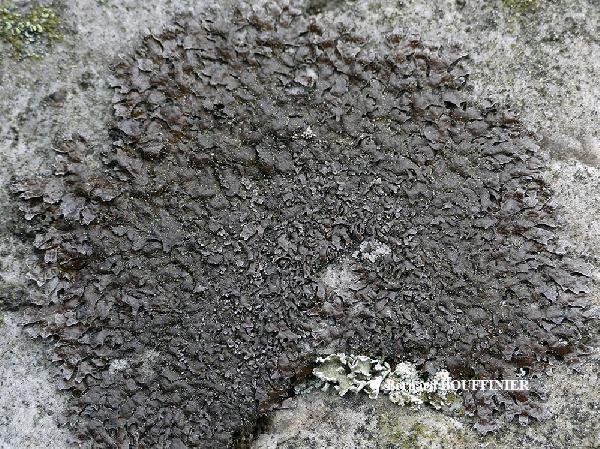Parmelia discordans Nyl.
Meddel. Soc. Fauna Flora Fenn., 13: 40, 1886
Synonyms: Parmelia omphalodes subsp. discordans (Nyl.) Skult; Parmelia omphalodes var. discordans (Nyl.) H. Magn.
Distribution: C - Sar (Ravera & al. 2024a).
Description: Thallus foliose, heteromerous, dorsiventral, closely adpressed, forming more or less regular, up to 10 cm wide rosettes which often merge into extensive swards. Lobes 0.5-1(-3) mm wide, sublinear, with angular apices, short and often imbricate. Upper surface dark brown (rarely grey to grey-brown in shade-forms), epruinose, weakly shiny, with mainly marginal, linear, up to 0.5 mm long, white pseudocyphellae; lower surface black, with simple or forked, black rhizines most abundant towards the margin. Upper cortex paraplectenchymatous, of 2-6 layers of densely packed cells, with a usually non-pored epicortex, the cell walls with isolichenan; medulla white; algal layer continuous; lower cortex paraplectenchymatous, thinner than upper cortex. Apothecia rare, lecanorine, cup-shaped, to 5 mm across, with a dark brown disc and a prominent thalline margin. Proper exciple thin, colourless; epithecium brownish; hymenium colourless, I+ blue; paraphyses mostly simple or sparingly branched; hypothecium colourless. Asci 8-spored, Lecanora-type. Ascospores 1-celled, hyaline, ellipsoid, 14-16 x 8-10 µm. Pycnidia rare, black, laminal. Conidia more or less thickened at both ends, 5.5-6.5 x c. 1 µm. Photobiont chlorococcoid. Spot tests: upper cortex K+ yellow, C-, KC-, P-; medulla K-, C-, KC+ violet or KC-, P+ orange-red. Chemistry: upper cortex with atranorin; medulla with protocetraric and protolichesterinic acids; fumarprotocetraric, lobaric and galbinic acids accessory, or present in traces.Note: a mainly western silicicolous lichen, mainly coastal in Scandinavia, usually restricted to upland areas in Central and Southern Europe, also known from Corsica (Roux & al. 2014).
Growth form: Foliose
Substrata: rocks
Photobiont: green algae other than Trentepohlia
Reproductive strategy: mainly sexual
Most common in areas with a humid-warm climate (e.g. most of Tyrrenian Italy)
Commonnes-rarity: (info)
Alpine belt: absent
Subalpine belt: extremely rare
Oromediterranean belt: very rare
Montane belt: very rare
Submediterranean belt: absent
Padanian area: absent
Humid submediterranean belt: absent
Humid mediterranean belt: absent
Dry mediterranean belt: absent
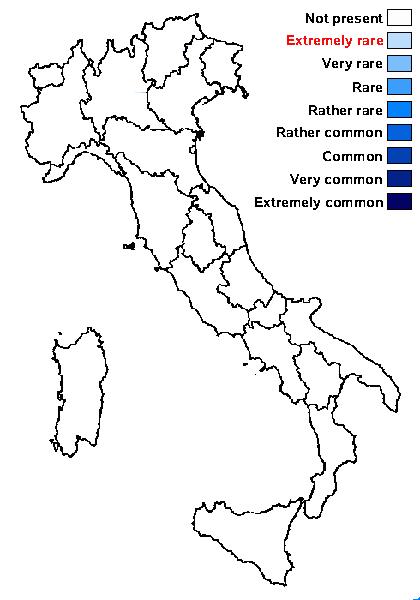
Predictive model
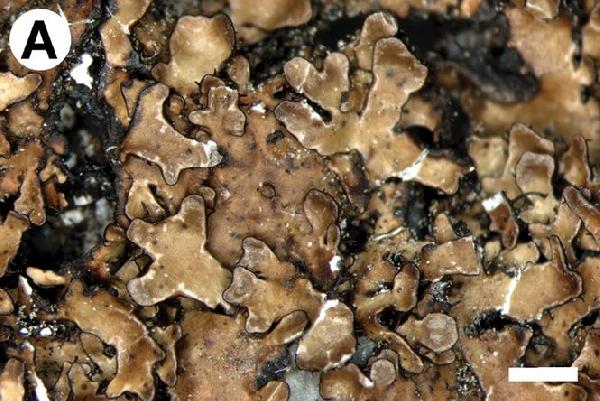
Source:Ossowska E, Guzow-Krzemińska B, Kolanowska M, Szczepańska K, Kukwa M (2019) Morphology and secondary chemistry in species recognition of Parmelia omphalodes group – evidence from molecular data with notes on the ecological niche modelling and genetic variability of photobionts. MycoKeys 61: 39-74. - CC BY-4.0
A Parmelia discordans, with marginal and laminal pseudocyphellae, laminal pseudocyphellae mostly not connected with marginal ones (S F-252494)
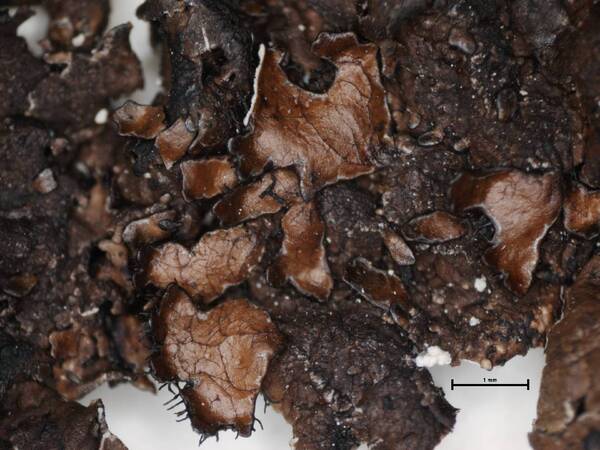
United States National Herbarium - Smithsonian – CC BT-SA 3.0 – Source: https://lichenportal.org/cnalh/taxa/index.php?taxon=Parmelia%20omphalodes%20subsp.%20discordans
Finland
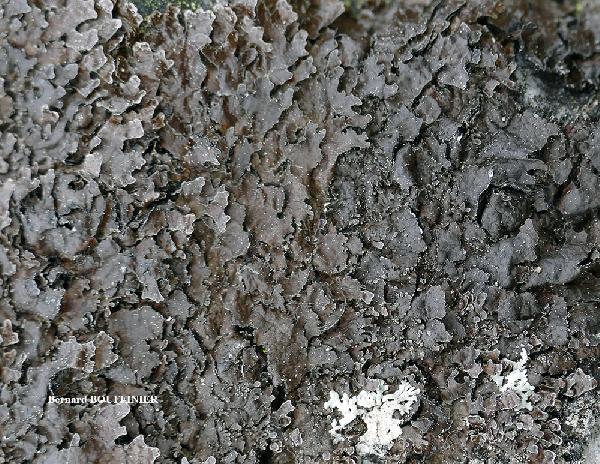
Bernard Bouffinier - Source: http://www.lichensmaritimes.org/index.php?task=fiche&lichen=805&lang=en
Sweden, Västervik
Growth form: Foliose
Substrata: rocks
Photobiont: green algae other than Trentepohlia
Reproductive strategy: mainly sexual
Most common in areas with a humid-warm climate (e.g. most of Tyrrenian Italy)
Commonnes-rarity: (info)
Alpine belt: absent
Subalpine belt: extremely rare
Oromediterranean belt: very rare
Montane belt: very rare
Submediterranean belt: absent
Padanian area: absent
Humid submediterranean belt: absent
Humid mediterranean belt: absent
Dry mediterranean belt: absent

Predictive model

Source:Ossowska E, Guzow-Krzemińska B, Kolanowska M, Szczepańska K, Kukwa M (2019) Morphology and secondary chemistry in species recognition of Parmelia omphalodes group – evidence from molecular data with notes on the ecological niche modelling and genetic variability of photobionts. MycoKeys 61: 39-74. - CC BY-4.0
A Parmelia discordans, with marginal and laminal pseudocyphellae, laminal pseudocyphellae mostly not connected with marginal ones (S F-252494)

United States National Herbarium - Smithsonian – CC BT-SA 3.0 – Source: https://lichenportal.org/cnalh/taxa/index.php?taxon=Parmelia%20omphalodes%20subsp.%20discordans
Finland

 INDEX FUNGORUM
INDEX FUNGORUM
 GBIF
GBIF

